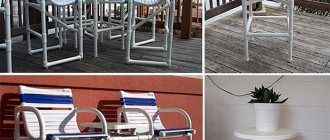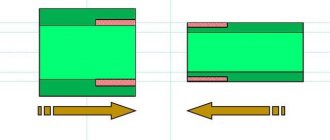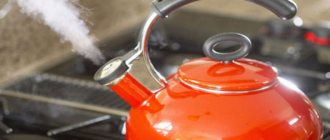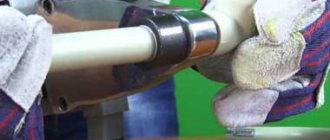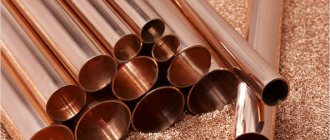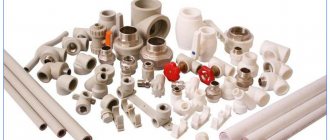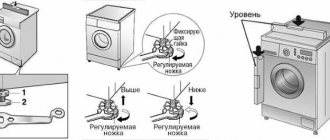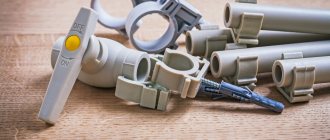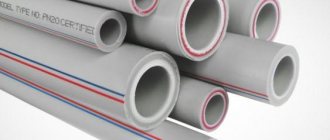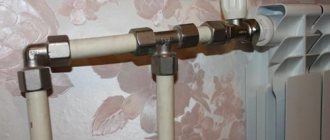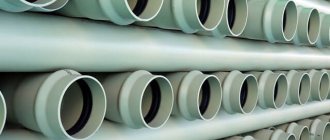Polypropylene pipes are used in the installation of water supply systems, for the installation of irrigation systems and for heating. The popularity of the material and various areas of use are due to its characteristics: strength, durability, ease of connection. An important argument in favor of polypropylene pipes was their price, which is significantly lower than that of metal-plastic or metal analogues.
The service life of a plastic pipeline with cold water is 50 years; such an impressive figure makes it necessary to replace outdated lines with this type of pipeline. The tightness of joints is the most important factor for any pipeline, therefore the viability of the system depends on the quality of installation. In the article we will talk about how to connect polypropylene pipes with metal, polyethylene, steel, and also consider various welding options.
Materials and tools
Soldering iron for welding
If you decide to save on installation services and do it yourself, then you need to buy or rent a special soldering iron with nozzles. In addition to this you will need:
- tape measure and marker for marking;
- scissors for cutting plastic pipes;
- cleaning for pipes.
There are several types of polypropylene pipes, which differ in their area of use:
- PN 10, 16 – used for laying cold water pipes;
- PN 20 - universal pipes with thick walls, they can withstand hot water at temperatures up to 80ºC, therefore they are suitable for heating installations;
- PN 25 is a composite pipe with a metal or nylon layer, which is peeled off during soldering. It is used for heating systems, the final heating temperature is 95°C.
Polypropylene pipes and fittings
A distinctive characteristic of connecting polypropylene pipes is the absence of joints directly between the pipes. If their diameter is less than 50 mm, all parts can be connected with fittings for various purposes:
- couplings - connect sections of the same diameter;
- crosses - used to create branches;
- plugs - seal the end of the pipe;
- adapters - used to connect pipes of different diameters;
- union fittings - connect to flexible hoses.
The pipes are different
Before starting to describe the installation instructions, it is necessary to define the materials, types and scope of application. Selecting pipes based on price or availability in a hardware store is unacceptable. The wrong choice can lead to difficulties after installation. These may include leaks, cracks and deformation. This leads to the need to redo the system and incur additional costs.
Hydraulic calculations determine the dimensional grid for pipes. Communications differ from each other and require different pipe diameters. The range of diameters ranges from 16 to 110 mm to cover almost all installation options and needs. Practice shows that the needs of an apartment are met by pipes with a diameter of up to 50 mm; exceptions are rare. Larger diameter main pipes. They require a special approach to installation and are rarely found in the work of a home craftsman.
Polypropylene pipes differ in color schemes. The shades and varieties of pipe colors are in no way related to performance characteristics and do not affect anything. They should not be taken into account. This is a standard solution for manufacturers, helping them make their products more catchy and bright against the general background. The only way to choose a pipe with a specific color and purpose is to purchase a white heating product. The color makes it possible to fit into any interior.
If there are colored stripes on the pipe, then they will carry an information load that is understandable to everyone. The blue stripe indicates the use of the product for cold water supply needs. The red stripe indicates the design to withstand high temperatures during operation. The color markings are approximate and carry minimal information load. Certain types of products are not burdened with even such markings. The line on the pipes helps determine the load, properties and becomes a guide when joining at seams. The line is a convenient guide during installation.
Alphanumeric markings carry the bulk of the information. You need to look for it on the outer wall of the product. Here it is worth showing special care and delving into what the manufacturer has written.
The polypropylene pipe has the designation PPR, accepted as the international marking of polypropylene. The designations PPRC, PP-B, PP-N, PP-3 and others are found when indicating the type of material. For the convenience of the user, a different marking system is provided, taking into account the type, pressure of the liquid, and pumped temperatures. In practice, four types of pipes are used: PN-10, PN-25, PN-16 and PN-20. The performance properties of the pipe and the maximum temperature of use depend on the number. PN-25 is used for heating needs and can withstand temperatures of 95 degrees.
Performance properties are directly dependent on the thickness of the pipe walls. Thick walls can withstand high temperatures and high pressure.
Polypropylene, despite its advantages, has a significant drawback - when overheated, significant linear expansion is observed. Cold water pipes located inside the building do not feel the negative influence of the expansion factor. Hot water supply pipes can feel the problem more significantly, experience deformation, the appearance of stress inside the structure, and sagging in long sections.
Reinforcement of polypropylene pipes is used to reduce the effect of thermal expansion. Reinforced with fiberglass and aluminum. The fiberglass reinforcement belt is located in the center of the pipe wall thickness and does not affect soldering.
Aluminum reinforcement is divided into two types. In the first case, the foil layer is located next to the outer wall of the product. An alternative option involves passing a layer of aluminum through the center. Both types differ in installation and design features.
Both reinforcement options make it possible to achieve a significant reduction in the level of expansion of pipes when heated. The layer of reinforcing material becomes a barrier against diffusion (oxygen penetration through the surface of the pipe inside it).
The penetration of oxygen molecules and their entry into the water inside the pipe causes a number of negative consequences: a significant increase in gas formation, the occurrence of corrosion processes, which is very dangerous for boiler equipment. A reliable reinforcing layer significantly reduces the negative impact on pipes and communications in general. Reinforced pipes are widely used in heating systems. Pipes for water supply are chosen with standard fiberglass reinforcement, which does not have a significant effect or influence on diffusion.
Pipes are sold in standard size sections of 2 m and 4 m. Retail outlets cut pipes in multiples of 1 meter. Special components are added to the pipes: threaded fittings for switching to another type of pipe, plugs, couplings, compensators, bypass loops, etc.
A variety of structural elements and consumables allows you to select options for assembling a system of any level of complexity. Consumables and parts are inexpensive, which allows you to purchase with the necessary reserves for installation and use.
How to operate a welding machine
Welding polypropylene
The principle of connecting a pipeline is to heat the elements and quickly connect them. Household pipe welding machines have a power of up to 1 kW. It is enough to quickly and efficiently heat the material, but for industrial purposes more powerful and expensive devices are used. The soldering iron comes with attachments that correspond to the diameter of various pipes. The pipe is heated from the outside, and the fitting from the inside.
The operation of the soldering iron begins with connecting it to the network and setting the desired heating temperature, depending on the diameter of the plastic pipes being welded. The average value is 250–270°C. Such a high temperature requires caution; touching a hot part will cause a burn; for safety reasons, you should wear gloves.
Connecting pipes using the crimp method
Often, repairs will require disassembling the pipeline. If the connection of the main components is made by soldering, which is reliable and durable, then disassembling it is almost impossible. Let's look at how to connect polypropylene pipes without a soldering iron, which cannot always be bought or rented from friends. In this case, you will need threaded fittings with a pressure ring, which are called collet fittings (crimp). And for good reason, because this kind of connection can withstand loads of up to 16 atmospheres.
Soldering process
To cut pipes, use a hacksaw or sharp scissors that do not deform the plastic. The incision is made at a right angle. If burrs appear on the end, they are carefully cleaned off. After cutting, the soldering depth is marked. You need to measure the section of pipe that will fit into the tee or coupling and mark a line with a marker. The size of this section depends on the diameter of the pipes; the larger it is, the greater the immersion in the connecting element.
Pipe stripper
If you have to work with reinforced pipes, the algorithm of actions changes. Before soldering, it is necessary to clean the top layer of the pipe, consisting of aluminum foil, basalt or nylon fiber. A special tool is designed to remove the required layer size.
Careful removal of the foil is very important; a small amount of material remaining on the pipe will ruin the tightness of the soldering.
Reinforced pipe
A soldering iron with nozzles selected according to the diameter of the pipes is installed on a flat and durable surface. On both sides, a pipe and a fitting are simultaneously put on the heated nozzle, deepening to the intended line. The heating time of the plastic depends on the size of the pipes: for 20 mm, 6 seconds are enough, and for 32 mm, 8 seconds are required. After maintaining a set period of time, the elements are removed and firmly fixed into each other, while turning movements must not be made. For strong adhesion of the joint it will take from 4 to 10 seconds, during which time the polypropylene will harden and form a permanent connection.
Heating temperature and time
Failure to comply with the recommended heating time leads to the formation of leaks - due to insufficient heating or sealing of the internal space - due to excessive overheating. If a melt appears, you should not try to remove it immediately; the melted plastic will become more deformed. You need to wait until it cools and cut off the excess.
Other types of fittings for polypropylene pipes
To make branches in one direction, polypropylene tees are used, which are produced in the form of straight, transition, one- and two-plane, manifold products. The latter option is more convenient due to the detachable connection.
Fitting tees are used to create branches.
To branch the main pipe in two directions, polypropylene crosses are used, which can be one-, two-plane or coplanar. The latter type of product allows you to join polypropylene pipes located in the same plane, without the use of contours and bends. This solution helps preserve free space and gives the structure a more aesthetic appearance.
To protect the pipeline from dirt, rust and mechanical impurities, polypropylene filters are often installed. In order to prevent the reverse flow of liquid in the system in the event of a water hammer or stoppage of plumbing equipment, check valves with a threaded plug are installed on the line, which makes it possible to clean the mechanism. They are installed in front of water meters, boilers and water heaters.
To protect the pipeline from deformation changes in the event of a pressure or temperature difference, it is advisable to install compensators for polypropylene pipes. They are represented by curved sections of pipe in the form of a loop. Compensators for polypropylene pipes are mandatory when installing a heating and hot water supply system. To cover dead-end sections of the network, plugs, caps and plugs with and without threads are used.
On a note! Plugs can be used when testing the system at any stage of its installation.
Fittings in the form of a ball valve allow you to close or open a pipe section.
The fluid flow is controlled by valves. The plastered version of the product is used for hidden installation of the system. The radiator valve is used to connect the line to the radiator, eliminating the need to operate a combination coupling.
You can completely close or open the pipe section using a ball valve, which has two positions. This device is more durable, however, if there is any malfunction in its operation, the product will have to be completely replaced.
Recommendations
Try to solder less by weight
Without experience, in order to understand how to solder pipes correctly, you can make several training connections. It is convenient to work with short connections by placing the welding machine on the table; in this position, you can do all possible work, and joining a partially laid line is more difficult. The soldering iron nozzle is put on a fixed polypropylene pipe, and a tee is inserted into the second part, while the device is supported by weight. When making a highway, you need to monitor the order of the connections being made. Try to avoid joining in hard-to-reach places where it will be difficult to use a soldering iron.
It is important to keep the material clean and dry, because dirt and moisture reduce the quality of the pipe connection. Even a small amount of moisture deforms the material when heated. The chemical composition of pipes from different manufacturers may not be the same, this will lead to leaky joints. It is necessary to buy all the material - pipes and fittings - from one manufacturer.
The temperature in the room where polypropylene is installed should not fall below +5°C.
PPR pipe welding process
The key to success is to perform the maximum number of knots in one position on the workbench. It is better to carry out soldering work on PPR pipes with an assistant, because when installing it yourself, it is easy to make a mistake.
Preparing the soldering machine
Working pairs - mandrels and couplings - are put on the heater and tightened with special screws. Diameters are selected to suit working needs. If you intend to work with one type of pipe, then it is enough to put on one pair, located as close as possible to the end of the heater.
Important ! It is more convenient to work if the device is securely fixed on the working surface of the workbench. It’s good if the design includes a screw for fastening to the edge of the tabletop. If this is not possible, then you can screw the device to the surface with self-tapping screws. For such fixation there must be a special surface.
To work with polypropylene, you need to turn on the soldering iron temperature to 260 degrees. The temperature is the same for all pipes. Only the warm-up time changes.
Care must be taken to ensure that the operating temperature is reached. To do this, you need to view the display tools available on a specific device.
Important ! Before connecting and heating, be sure to clean the connection points from dust and dirt, and also degrease them.
Connection marking
The next step is to mark the connection. You need to measure the length of the weld belt and make a mark with a pencil or marker. This will be the place where the pipe will be inserted into the heating sleeve. Each diameter has its own indicator and must be followed. If necessary, an additional mark is applied if the relative position of the parts for mating matters.
Crimp connection method
Connection diagram using a collet fitting
Pipeline joining by soldering is reliable and durable, it is impossible to disassemble it, and sometimes this is exactly what is required for repairs. In addition, it is not always possible to purchase or borrow a welding machine; in such cases, they use the method of connecting polypropylene pipes without soldering. For this, fittings with threads and a clamping ring are used. They are called collet or crimp, such a connection can withstand a pressure of sixteen atmospheres.
For a mechanical connection, you need to purchase several additional parts: elbows designed for joining of different diameters, a tee, solder and combined couplings with external and internal threads, plugs, adapters with external threads, elbows and tees with a union nut, ball valves, various fittings with factory thread.
Clamp fitting structure
To ensure tightness, joints and seals are generously lubricated with silicone.
To work, you will need a crimp wrench, which can be purchased at the same time as the fittings. Having cut off the required part of the pipe, firmly insert it into the fitting, wrap the thread of the element with thread to seal it and tighten the ferrule and nut, completely tightening it with a wrench. This connection method takes much longer than welding, but it is convenient for connecting polypropylene pipes to radiators.
Compression fittings
Detachable fitting connection
You don’t know how to connect a HDPE (polyethylene) pipe to a polypropylene pipe? Take this method into use. It is suitable for mating other materials, as well as installation of small diameter pipes.
Docking using detachable fittings is convenient - the connection can be disassembled, cleaned or replaced at any time. You don’t need any special tools to create it - just scissors for cutting polypropylene or a hacksaw for metal and a set of wrenches are enough.
Let us describe the process of creating a detachable connection step by step:
- At one end we attach a crimp nut. This is where the split type ring should be located. Moreover, its edge should be located 1 mm from the edge (cut).
- We connect it to the second pipe and secure it to the fitting.
- Use a wrench to tighten the crimp nut.
Types of fittings
Joining a steel pipe with a polypropylene pipe
When installing heating or plumbing, there are areas where metal and plastic need to be joined. The connection between a polypropylene pipe and a metal pipe occurs using special adapters. This fitting has a smooth plastic hole on one side and a threaded metal insert on the other. The polypropylene pipe is connected by welding, and the metal pipe is screwed with a wrench. The resulting joint does not have the strength of a welded joint, but will serve for a long time.
Connection with metal pipe
After complete installation of the system, it is necessary to conduct a test run of water to check the tightness of all connection points of pipes and other elements. If threaded connections are leaking, they must be tightened.
Self-installation of plumbing or heating from polypropylene pipes is a completely doable task. To implement it, you must strictly follow the instructions for using the plastic welding machine and installation technology. To better understand all the nuances of the process, you should watch a video in which experienced installers share their experience.
Installation
We will consider below how to correctly install a system using polypropylene pipes so that the result is durable. If you still have doubts about your skills, or you do not dare to independently replace products, then forget about it forever. The fact is that, in addition, incorrect soldering of such pipes can be corrected by connecting couplings.
Advice! When choosing polypropylene products, focus on the diameter of old pipes, which will help significantly simplify the installation of the entire structure.
How to connect a polyethylene pipe to a polypropylene pipe
To connect such pipes you need to use special fittings. Such a connection is necessary in cases where water was introduced into the house using HDPE pipes, and further distribution of water inside the house is carried out using polypropylene pipes. So, we can distinguish 2 types of connections:
- In the first case, you attach a threaded coupling to the HDPE pipe, where there will be a clamp connection on one side, and a similar coupling on the polypropylene one. It’s just that there will be a solder joint on one side, and a threaded joint on the other. In both cases, FUM tape or tow is used for threading to seal the joint and avoid leaks.
- In another case, a flange connection is used. A rubber seal is installed between the flanges. The flanges are bolted together.
Flange connection
Advantages and disadvantages of PP
The advantages of PP pipes in the installation of internal heating and water supply are obvious and are confirmed by their undivided dominance in this area.
The properties that make this product a priority for the assembly of intra-house communications are:
- noiselessness;
- impact strength;
- ease;
- corrosion resistance;
- durability;
- tightness of connections;
- cheapness;
- immunity of the internal walls to plaque.
But polypropylene pipes also have negative sides that cause inconvenience during installation:
- lack of flexibility;
- strong relative elongation when heated;
- the need for special tools when connecting individual products.
Specialists who assemble PP pipes every day have long developed ways to compensate for the listed disadvantages, so there are no special alternatives to polypropylene.
